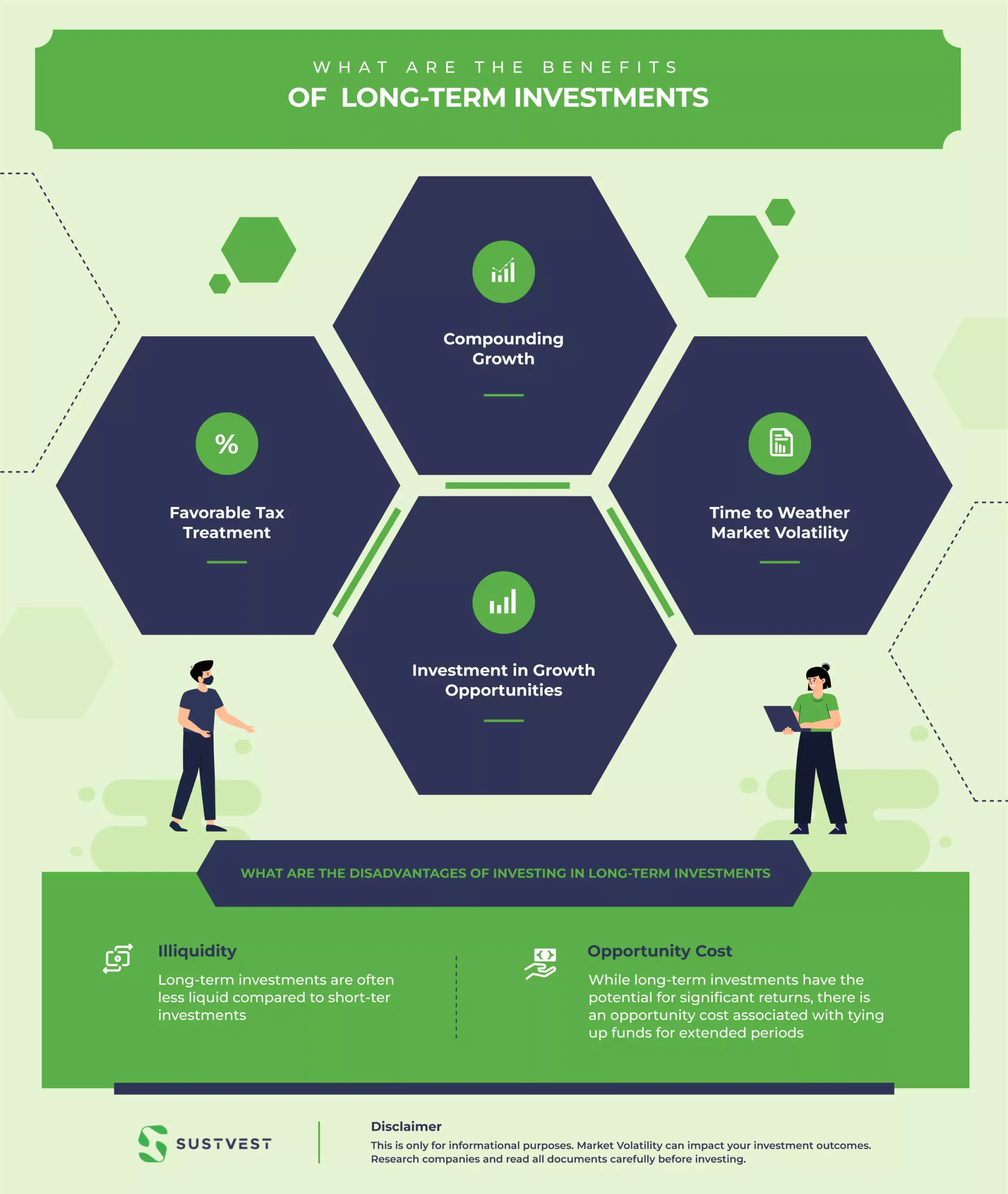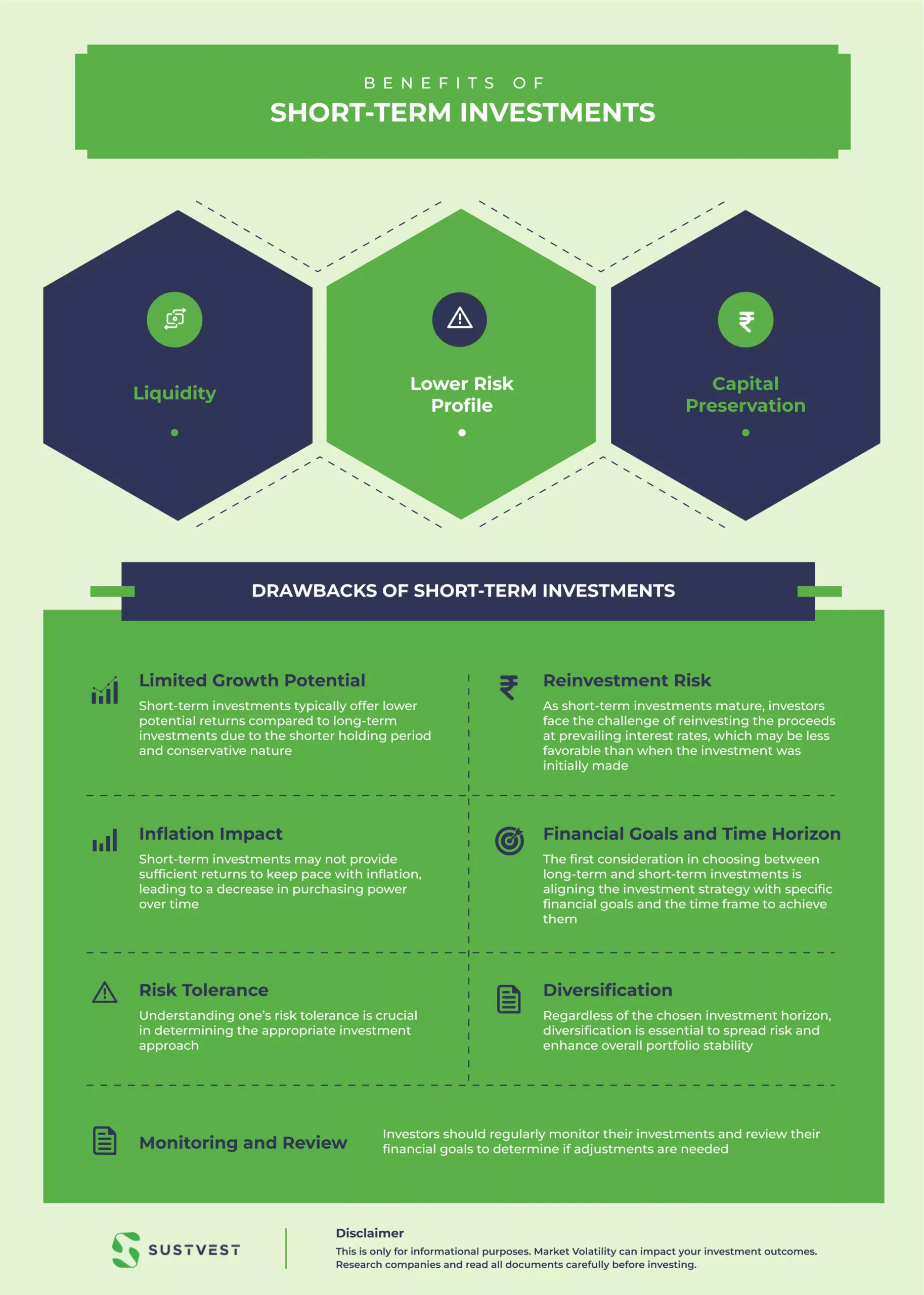In today’s world ,investing is a crucial aspect of personal financial planning that allows individuals to grow their wealth and achieve various financial goals.
One of the fundamental decisions when considering investment options, is choosing between long-term and short-term investments. Each approach has its unique advantages and considerations, making the decision complex and solely depends on your financial objectives, risk tolerance, and time boundation.
In this article , you will learn about the characteristics, benefits, and drawbacks of both long term or short term investment to help investors make informed decisions aligned with their financial needs.

What are Long-Term Investments
If you are wondering what long-term investments are , here is a simple definition for you. Long term investments refer to the financial assets held for an extended period, typically years or even decades by the investee.
They are designed to build wealth gradually over time and often involve exposure to various asset classes such as stocks, bonds, real estate, and mutual funds. The primary focus of long-term investments includes to make use of the power of compounding and benefit from the potential growth of assets over extended periods.
What are the Benefits of Long-Term Investments
You must be wondering what are the benefits of long term investments. We will now discuss a few benefits of long term investments :
- Compounding Growth
The most significant advantage of long-term investments for you is that they carry the potential for compounding growth. As earnings from investments are reinvested over time, the initial investment base increases, leading to exponential growth in wealth.
- Time to Weather Market Volatility
Long-term investors have the advantage of weathering short-term market fluctuations and downturns. Over extended periods, markets tend to recover from volatility, potentially allowing long-term investors to recoup losses and benefit from subsequent upswings.
- Favorable Tax Treatment
Long-term investments often receive more favorable tax treatment compared to short-term investments. In many jurisdictions, capital gains on long-term investments may be subject to lower tax rates, incentivizing investors to hold assets for longer periods.
- Investment in Growth Opportunities
Long-term investors can target growth opportunities, such as investing in early-stage companies or emerging industries, that may require time to reach their full potential and generate substantial returns.
What are the disadvantages of investing in Long-Term Investments
- Illiquidity
Long-term investments are often less liquid compared to short-term investments. If an investor needs to access funds quickly, they may face challenges in selling long-term assets without compromising their value.
- Opportunity Cost
While long-term investments have the potential for significant returns, there is an opportunity cost associated with tying up funds for extended periods. Investors may miss out on other investment opportunities that could have generated higher returns in the short term.

What are Short-Term Investments
Short-term investments, on the other hand, are designed to be held for a relatively brief duration, usually less than a year. These investments aim to preserve capital and generate modest returns within a short time frame. Common examples of short-term investments include money market funds, certificates of deposit (CDs), Treasury bills, and short-term bonds.
Benefits of Short-Term Investments
- Liquidity
Short-term investments are highly liquid, allowing investors to access their funds quickly and without significant penalties. This flexibility can be advantageous in emergencies or when seizing short-term investment opportunities.
- Lower Risk Profile
Short-term investments are generally considered less risky than long-term investments. Since the holding period is shorter, there is less exposure to potential market volatility and adverse economic conditions.
- Capital Preservation
Short-term investments prioritize capital preservation, making them suitable for investors with a low risk tolerance or those who need to protect their principal.
Drawbacks of Short-Term Investments
- Limited Growth Potential
Short-term investments typically offer lower potential returns compared to long-term investments due to the shorter holding period and conservative nature.
- Reinvestment Risk
As short-term investments mature, investors face the challenge of reinvesting the proceeds at prevailing interest rates, which may be less favorable than when the investment was initially made.
- Inflation Impact
Short-term investments may not provide sufficient returns to keep pace with inflation, leading to a decrease in purchasing power over time.
VI. Considerations for Choosing Long-Term or Short-Term Investments
- Financial Goals and Time Horizon
The first consideration in choosing between long-term and short-term investments is aligning the investment strategy with specific financial goals and the time frame to achieve them. Retirement planning and long-term wealth accumulation generally favor long-term investments, while short-term goals like funding a vacation or a down payment on a house may require more immediate access to funds through short-term investments.
- Risk Tolerance
Understanding one’s risk tolerance is crucial in determining the appropriate investment approach. Investors with higher risk tolerance may opt for long-term investments to capitalize on growth opportunities, while risk-averse individuals may prefer short-term investments to prioritize capital preservation.
- Diversification
Regardless of the chosen investment horizon, diversification is essential to spread risk and enhance overall portfolio stability. A well-diversified portfolio may include a mix of long-term and short-term assets to balance risk and return objectives.
- Monitoring and Review
Investors should regularly monitor their investments and review their financial goals to determine if adjustments are needed. Long-term investors should avoid making impulsive decisions based on short-term market fluctuations.

Conclusion
Deciding between long-term or short term investment is a critical aspect of an individual’s financial journey. Both approaches have their merits and drawbacks, and the choice depends on an investor’s unique financial objectives, risk tolerance, and time horizon. Long-term investments offer the potential for compounding growth and time to ride out market fluctuations, making them suitable for wealth accumulation and retirement planning. Short-term investments, on the other hand, prioritize liquidity, capital preservation, and lower risk, making them ideal for achieving short-term goals or maintaining an emergency fund. Ultimately, a well-informed and balanced approach to investing, tailored to an individual’s specific financial situation, is the key to building a robust and successful investment strategy.

Founder of Sustvest
Hardik completed his B.Tech from BITS Pilani. Keeping the current global scenario, the growth of renewable energy in mind, and people looking for investment opportunities in mind he founded SustVest ( formerly, Solar Grid X ) in 2018. This venture led him to achieve the ‘Emerging Fintech Talent of the Year in MENA region ‘ in October 2019.




